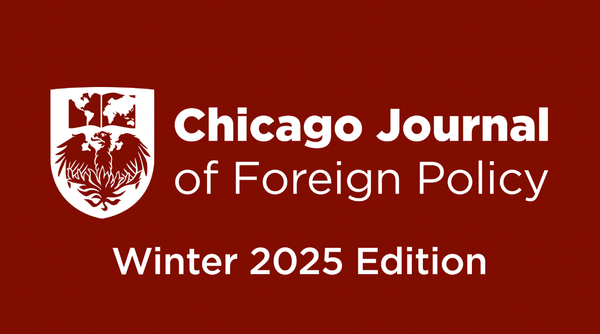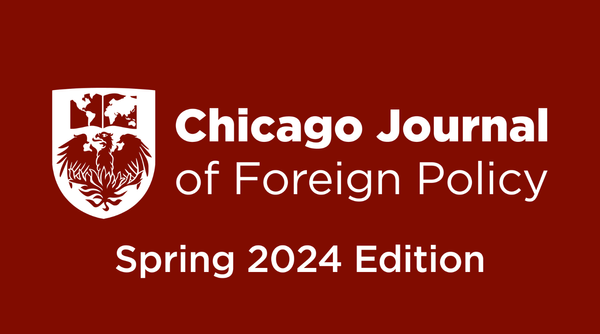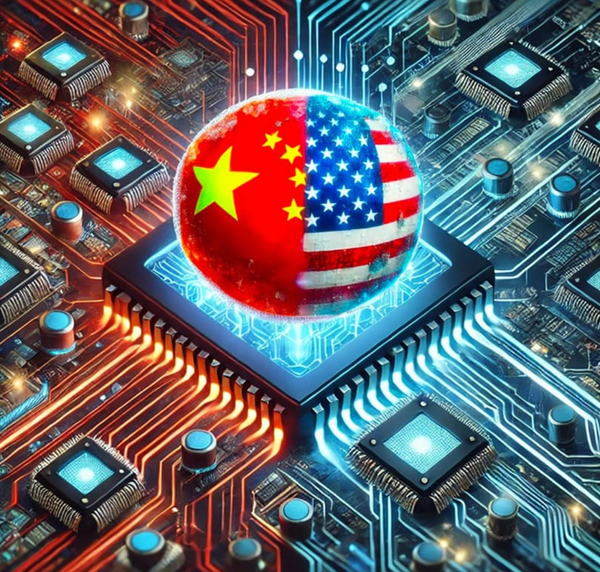The Impact and Importance of Indigenous Rights Education in New Zealand

Alex Jung, University of Chicago
Indigenous rights have often been at the center of contention in several states living in the post-colonial era. Whilst the issue of colonial identities appeared most relevant in the 19th and early 20th century, with 1,500 languages on the brink of extinction by the year 2100, preserving indigenous rights, and thus indigenous cultures, must be prioritised within state policy.[1] Of the 7,000 languages in the world, 6,700 are indigenous, "and it is precisely these that are the most threatened," as the UN Declaration on the Rights of Indigenous Peoples claims; thus, states must work to build policy that protects the survival of indigenous cultures and rights.[2] In order to seek this connection, this article examines the impact and importance of Indigenous rights education through the examination of Oceania. Though Australia and New Zealand became independent of British rule in 1948 and 1947, respectively, the ongoing struggle to preserve Aboriginal rights in Australia and the Māori rights in New Zealand suggests that education of Indigenous rights is of utmost importance.[3] This importance is vital in overcoming both segregation and a step closer to achieving positive peace: An optimal environment under which human potential can flourish.[4]
In order to understand the importance of indigenous rights education in New Zealand, an understanding of New Zealand's colonial history, and the remaining remnants of it today, is required. Following a period of exploration in the late 18th century, the first encounters of the indigenous Māori people and the Pakeha (white Europeans) were characterised as brutal and oppressive. This is reflected in the 'Musket Wars' - a series of battles between Pakeha and Māori resulting in the death of one-fifth of the Māori population at the time.[5] Such fighting ceased with the Treaty of Waitangi signed on February 6th 1840, marking a new, but arguably worse, chapter in New Zealand's race relations.[6] As seen in the case of many colonial efforts, the state weaponised education as a tool of assimilation by discouraging indigenous cultural practice in the new generation; the Native School Act forbade the use of the Māori language in schools and emphasised learning in the domestic sector rather than academic areas.[7] Certainly, Māori engagement in World War I and II, namely the 28th Battalion, helped develop greater relations between Pakeha and Māori, resulting in the sharp decline in direct violence between the two parties.[8] However, Galtung's Violence Triangle suggests that the 'visible direct violence' can not be the only factor considered when examining violence within a state.[9] Structural violence—the violence caused by attitudes and behaviors such as racism and sexism—is seen as 'invisible violence' that must also be overcome for a more peaceful society. In an exclusive interview with Māori Party Leader John Tamihere, he claims "we [the Māori People] suffer significantly from colonisation hangovers. And we're trying to work our way through this deadly little hangover at the moment."[10] Several Māori share this sentiment. A survey conducted by Radio New Zealand reported that 93 percent of Māori in Aotearoa experience racism every day, whether that be in schools or the workplace.[11] The ongoing distrust and poor relations established in New Zealand were also reflected in Covid-19 vaccination rates; Māori vaccination rates were nearly 10% lower than that of the national average.[12] When explaining this phenomenon, journalist Morgan Godfery claims, "These are the same governments who broke their promises to the local hapū, throwing thousands out of work for reasons of national policy."[13] The generational distrust justifies the urgent need for improvement in race relations in New Zealand. Thus, indigenous rights education can be seen as a vital step in closing the gap and inconsistencies between Māori and Pakeha relations in order to overcome structural violence and bring us a step closer to a more peaceful and equitable society.
The ongoing undertones of racism and structural violence evident in the nation today may exacerbate the need for indigenous education within the nation. Resistance towards Māori language education is reflected not only in schools but in broader society. A notable incident was in 2021 when Kim Williams, a spokesperson in the region of Tauranga, addressed the crowd with Māori when they shouted they "didn't want to hear that" and that Williams should "get off the stage."[14] Whilst this incident in a local community does not reflect the broader sentiment shared by all New Zealanders, several politicians, from both ends of the political spectrum, have undermined the importance for youth to be engaged in Māori language education. An exclusive interview with Ted Johnston, the leader of the right-wing Opportunities Party, revealed that he thought Māori language education was not important enough to be worth investing in; he claimed the more important priorities were investment in housing and infrastructure.[15] Though this pragmatic perspective has validity, this challenges the United Nations' notions that human rights are indivisible; put into simple terms, one right should not be placed greatly over another.[16] Furthermore, although politicians may be unwilling to financially prioritize all rights equally, it does not mean the New Zealand state cannot uplift multiple issue areas simultaneously. Similarly, the leader of the ACT Party, the fastest growing right-wing party, David Seymour, claimed that the notion that the indigenous language was dying was wrong, stating, "The most effective way to destroy people's passion for a particular pursuit is to make it compulsory."[17] Thus, he strongly repelled the calls for changes in legislation that would result in the implementation of indigenous language-based learning. Even the left-winged Labour Party Minister Kelvin Davis shared these right-wing concerns, claiming that "There is a resistance in some areas to the teaching of te reo, the teaching of tīkanga, the teaching of histories in our schools, and so there is still resistance to things to do with Māori.”[18] His fear of "backlash" justified the government's decisions to omit Māori education in the national curriculum. Whether it be reluctance or ignorance, it is clear that the strive for indigenous revitalization has been undermined significantly through heavy politicisation; thus, greater attention must be provided to uplifting indigenous communities and freeing the conversation of political bias.
Conversely, the positive developments made in New Zealand to promote Māori language education have had profound impacts on indigenous revitalisation within the nation. The current initiatives and the potential they hold show a promising future for such efforts. An optimistic sign is that a growing number of non-Māori New Zealanders are embracing learning the Māori language.[19] Furthermore, the 2020 Education Training Act presented itself with greater blueprints to revive the language in schools. Article 9 1d indicates that "a board’s primary objectives in governing a school is… working to ensure that its plans, policies, and local curriculum reflect local tikanga Māori."[20] Though this is a small subsection of a vast document, and arguably the emphasis of Māori rights is disappointingly minimal in the Act, the inclusion of such policy shows small steps or progress. The Race Relations Commissioner of New Zealand, Meng Foon, claims that New Zealand must make Māori language learning compulsory in a school setting. Ultimately, Foon highlights the key reason behind such actions: "Te reo Māori has helped me build relationships within the communities I try to serve, and it has also assisted in connecting many diverse cultures and Māori."[21] Through language, stronger dialogue and cultural integration are made possible, thus providing a compelling argument through the lens of peacebuilding efforts. Though the Labour Party government had worries of "backlash," they have claimed that the Māori language should be "embraced, supported and strengthened" in schools.[22] Former Prime Minister Chris Hipkins also claimed that "there's nothing threatening about that, it's a really positive development for the country. It recognises that te reo Māori is our first language, one that we should all be proud of."[23] Furthermore, while there are benefits for all New Zealanders to engage with the indigenous culture, the acknowledgement of Māori rights enables a stronger cultural identity. Besides governmental changes, the enthusiastic and positive atmosphere of both Māori and Pakeha in society to integrate Māori language learning has been heartwarming; A key program is Te Ahu o Te Reo Māori. This initiative enables school teachers to receive adequate education in the language to then teach in classes. This enables both an effective and accurate deliverance of the language in the school setting. One of the driving factors for this program is supporting Māori students to feel more confident in their national identity; "Māori learners thrive when their identity, language and culture is embedded into their learning, and they have a strong sense of belonging," the program mission statement claims.[24] In an exclusive interview with Teraania Ormsby, a chapter leader in this program claimed that it has the ability to "change one's life" and create a "space in which Maori can put values and priorities at the forefront of how we engage with the world." Therefore, current initiatives and projects, as well as steady changes in legislation, show the positive impact indigenous education can have on a nation's identity and society.
Indigenous education is deprioritised as a policy objective, receiving disproportionately less attention and resources; this is mainly a result of political ignorance and right-wing resistance to providing attention to the issue of indigenous rights. Nonetheless, as states aim to move towards a greater trend of peace, indigenous revitalization movements must not be ignored. Undoubtedly, the issue of racial tensions, though improved through time, still has pitfalls in the Oceania region. In March 2023, a referendum that would have Aboriginal and Torres Strait Islander people represented in the Australian Parliament was rejected with a mere 39.3% yes vote.[25] The referendum in Australia is just one of several examples of an ongoing deterioration in race relations today; it is thus in a state's best interest to prioritise both the education and support toward indigenous rights for a peaceful and sustainable future.
[1] Maeve Campbell. “A fifth of the world's languages could disappear by the end of the century, new study reveals.” Euronews. December 12 2021. https://www.euronews.com/travel/2021/12/20/a-fifth-of-the-world-s-languages-could-disappear-by-the-end-of-the-century-new-study-revea
[2] “UN DESA Policy Brief No. 151: Why Indigenous languages matter: The International Decade on Indigenous Languages 2022–2032.” United Nations Department of Economic and Social Affairs. February 10 2023. https://www.un.org/development/desa/dpad/publication/un-desa-policy-brief-no-151-why-indigenous-languages-matter-the-international-decade-on-indigenous-languages-2022-2032/
[3] “Federation.” National Museum Australia. (Accessed October 19 2024) https://www.nma.gov.au/defining-moments/resources/federation; “New Zealand Sovereignty: 1857, 1907, 1947, or 1987?” New Zealand Parliament. August 28 2007. https://www.parliament.nz/en/pb/research-papers/document/00PLLawRP07041/new-zealand-sovereignty-1857-1907-1947-or-1987#:~:text=Full%20New%20Zealand%20sovereignty%20can,Introduction
[4] “Positive Peace.” Institute for Economics & Peace. (Accessed October 20 2024) https://www.economicsandpeace.org/research/positive-peace/
[5] “A history of New Zealand 1769-1914.” New Zealand History. November 2 2023. https://nzhistory.govt.nz/culture/history-of-new-zealand-1769-1914
[6] “The Treaty in brief.” New Zealand History. May 17 2017. https://nzhistory.govt.nz/politics/treaty/the-treaty-in-brief
[7] Ross Calman. “Māori education – mātauranga - The native schools system, 1867 to 1969.” Te Ara - the Encyclopedia of New Zealand, (accessed 18 November 2024) https://teara.govt.nz/en/maori-education-matauranga/page-3
[8] “Māori and the Second World War.” New Zealand History. May 1 2020. https://nzhistory.govt.nz/war/maori-in-second-world-war
[9] Johan Galtung. “Cultural Violence.” Journal of Peace Research, Vol 27, No.3. August 1990. https://www.galtung-institut.de/wp-content/uploads/2015/12/Cultural-Violence-Galtung.pdf
[10] John Tamihere, interview by Alex Jung. Auckland: 2023.
[11] Moana Ellis “Most Māori experience racism every day - new research.” Radio New Zealand. March 22 2021. https://www.rnz.co.nz/news/ldr/438895/most-maori-experience-racism-every-day-new-research
[12] Michael Neilson. “Covid 19 coronavirus: Māori vaccination rate nearly half that of Pākehā, Asian populations - 'it's a crisis.'” New Zealand Herald. June 30 2021. https://www.nzherald.co.nz/kahu/covid-19-coronavirus-maori-vaccination-rate-nearly-half-that-of-pakeha-asian-populations-its-a-crisis/C36GL72JJEHMHUONBSVEGMV2WQ/#google_vignette
[13] Morgan Godfrey. “In Kawerau one thing impedes the effort to vaccinate Māori: New Zealand’s history.” The Guardian. October 19 2021. https://www.theguardian.com/world/2021/oct/20/in-kawerau-one-thing-impedes-the-effort-to-vaccinate-maori-new-zealands-history
[14] Vita Molyneux.. “Tauranga Tauranga crowd jeers at speaker addressing them in Te Reo Māori.” Newshub. May 28 2021. https://www.newshub.co.nz/home/new-zealand/2021/05/tauranga-crowd-jeers-at-speaker-addressing-them-in-te-reo-m-ori.html
[15] Ted Johnson, interview by Alex Jung. Auckland: 2023.
[16] “What are human rights?” United Nations Human Rights Office of the High Commissioner. (accessed October 29 2024). https://www.ohchr.org/en/what-are-human-rights#:~:text=All%20human%20rights%20are%20indivisible,economic%2C%20social%20and%20cultural%20rights
[17] “David Seymour: Don't force Kiwi kids to learn Te Reo.” Newshub. April 27 2017. https://www.newshub.co.nz/home/politics/2017/04/david-seymour-don-t-force-kiwi-kids-to-learn-te-reo.html
[18] Laura Walters. “Kelvin Davis: Aotearoa 'not ready' for compulsory te reo Māori.” StuffNZ. July 1 2022. https://www.stuff.co.nz/pou-tiaki/129137886/kelvin-davis-aotearoa-not-ready-for-compulsory-te-reo-mori
[19] Brian Tweed. “A growing number of non-Māori New Zealanders are embracing learning te reo – but there’s more to it than language.” The Conversation. February 2 2023. https://theconversation.com/a-growing-number-of-non-maori-new-zealanders-are-embracing-learning-te-reo-but-theres-more-to-it-than-language-198154
[20] “Education and Training Act 2020.” New Zealand Parliamentary Counsel Office. (accessed November 5 2024). https://www.legislation.govt.nz/act/public/2020/0038/latest/LMS280244.html
[21] Bronson Perich. “Race Relations Commissioner wants compulsory te reo in schools.” 1News. February 7 2022. https://www.1news.co.nz/2022/02/06/race-relations-commissioner-wants-compulsory-te-reo-in-schools/
[22] “Government wants all education providers to use te reo Māori every day.” RNZ. November 13 2020. https://www.rnz.co.nz/news/national/430513/government-wants-all-education-providers-to-use-te-reo-maori-every-day
[23] Ibid
[24] “The Māori Language in Education Strategy.” Ministry of Education of New Zealand. July 2 2024. https://www.education.govt.nz/our-work/overall-strategies-and-policies/te-ahu-o-te-reo-maori-fostering-education-in-te-reo-maori
[25] Abby, Vela. “Despite early support,Australians voted 'No' to First Nations' Voice in constitution” March 23 2023.





